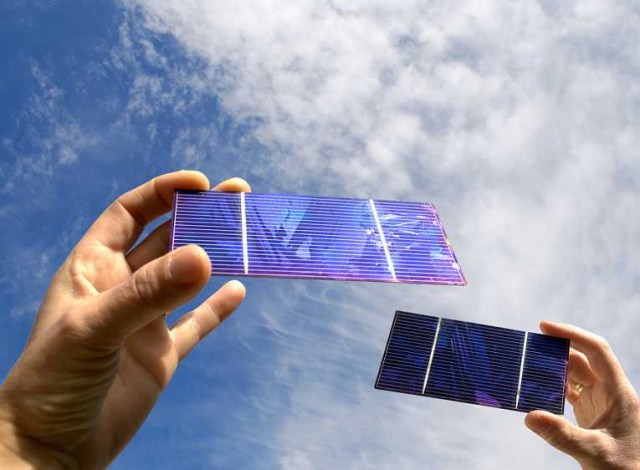How can nanotechnology improve solar cells
Using nanoparticles in the manufacture of solar cells has the following benefits:

- Reduced manufacturing costs as a result of using a low temperature process similar to printing instead of the high temperature vacuum deposition process typically used to produce conventional cells made with crystalline semiconductor material.
- Reduced installation costs achieved by producing flexible rolls instead of rigid crystalline panels. Cells made from semiconductor thin films will also have this characteristic.
- Currently available nanotechnology solar cells are not as efficient as traditional ones, however their lower cost offsets this. In the long term nanotechnology versions should both be lower cost and, using quantum dots, should be able to reach higher efficiency levels than conventional ones.
Solar Cells: Nanotechnology Applications under Development
Researchers at Michigan Technological University have developed a honeycomb like structure of graphene in which the graphene sheets are held apart by lithium carbonate. They have used this “3D graphene” to replace the platinum in a dye sensitized solar cell and achieved 7.8 percent conversion of sunlight to electricity.
Researchers at Los Alamos National Lab have demonstrated a solar cell that uses a copper indium selenide sulfide quantum dots. Unlike quantum dots containing lead or cadium the copper based quantum dot is non-toxc as well as low cost.
Researchers at MIT are studying solar cells made from single molecule thick sheets of graphene and materials such as molybdenum diselenide. They are predicting that this type of solar cells could produce up to 1000 times as much more power for a given weigh of material than conventional solar cells. They have completed computer modeling and are working on building the solar cells.
Researchers at MIT have developed a solar cell using graphene coated with zinc oxide nanowires. The researchers believe that this method will allow the production of low cost flexible solar cells at high enough efficiency to be competive.
Solar Cells: Nanotechnology Company Directory
| Company | Materials Used |
| Nanosolar | Copper-Indium-Diselenide semiconductor ink |
| Global Photonics | Organic solar cells |
| Innovalight | Silicon nanocrystalline ink |
| Bloo Solar | “Nano-cables” grown on a thin film material |
| EnSol | Nanocrystals embedded in a thin film material |
| Solarmer Energy |
Nanoparticles in plastic solar cells
|
To know More about Nanotechnology in Solar Cells grab the chance and attend the forthcoming Conference : 5th International Conference on Advanced Material Research and Nanotechnology.
Dates of the Conference : September 17-18, 2018
Venue : Berlin, Germany
For more Details : Advanced Materials 2018
Follow us on : WordPress, Facebook, Google Plus, Linked In, Blogger
- WordPress: https://bit.ly/2HyNG3q
- Blogger: https://bit.ly/2JTyTFV
- Facebook: https://bit.ly/2LNOvba
- Twitter : https://bit.ly/2t5iGDa


No comments:
Post a Comment